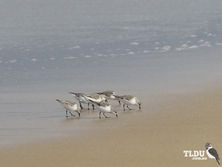
Shoppers Feedback:
Jan 17, 2017
Hello Ros,
I have now paid the invoice, but I would like to write to you just to say a big THANK YOU for getting me the Penguin!
The ChatterMate Penguin became a nice memory for me when I was in New Zealand, and I am so greatful to you for arranging so that I could have it! :-)
Thank you so much!!!!!!!!!!!
Regards,
Malin
Hi Ros,
Many thanks for your very kind email. I really appreciate your prompt reply!
I appreciate your advice regarding the decorations and customs. These are a gift for my daughter’s exchange student family so when she returns home on the weekend I will show her and see if she loves them as much as I do!
Thanks so very much again - I am truly grateful for your kind assistance.
Kind Regards
Bernadette
Ros,
Thanks again for the great customer service. It's a refreshing change!
Best regards,
Trevor
Hey Roz,
Thank you for your emails. Just loved my first order. The cute little Aussie bush critters are going to be used for an office Christmas decoration. My colleagues also liked them and talked about making an order to your site. I'll send you a photo when completed.
I'll be ordering more to send to my daughter's host family in America.
Fabulous service from you.
Kind regards,
Michelle
Thankyou. Order arrived today. One very happy grandson with his new beastly binoculars.
Regards,
Irene
- Home
- Wild Wonders
- Shop
- Aromas of Australia
- Australian Made
- Books
- Book Marks
- Christmas Decoration Sale
- Christmas Decorations
- Clocks
- Drink Holders
- Garden & Outdoor
- Gift Wrapping & Cards
- Home & Giftware
- Jewellery
- Keyrings
- New Products
- Pencils & Pen Holders
- Photo Frames
- Plush Toys
- Plush with Sound
- Sheepskin Rugs
- Stationery
- Stone Carvings
- Toys & Games
- Travel Goods
- Wedding
- Wild Figurines
- Wildlife Safety Products
- Wind Chimes
- Wine Charms
- View All Products
- Wildlife
- Australiana
- Explore
- Contact Us
Sanderling

Quick Facts
| Length: | - |
| Height: | 20 cm |
| Weight: | 60 grams |
| Colour: | - |
| Habitat: | Open sandy beaches at the edge of the waves, on sandbars and spits. |
| Food: | Insects, arthropods, small crustaceans. Seeds and buds are eaten at nesting sites. |
| Predators: | - |
| Status: | NSW - Vulnerable. Secure in all other States and Territories |
The Sanderling is a tiny, pale grey wader, seen darting along shorelines. The upper body is grey, with white below. The bill is dark, thick at the base and slightly drooped at the tip. The legs are short and black and lacking a hind toe. The flight is flickering and a prominent white wingbar is obvious. When in breeding plumage, the head, neck and breast is rufous.
The Sanderling is slightly larger than the Red-necked Stint, with a longer, heavier bill, and smaller than the Curlew Sandpiper. In flight the large white wingbar is obvious, as is its way of dashing along the beach in front of the waves.
Sanderlings are found very widely along Australian coastlines and are regular visitors to New Zealand. The species could be considered cosmopolitan, being found along the coastline in many other countries. They breed from north America to north Russia and islands in the Arctic Ocean.
Sanderlings are found on open sandy beaches at the edge of the waves, on sandbars and spits. They roost on bare sand in the dunes or behind piles of kelp.
This is a migratory species, breeding mostly in Siberia, moving south with different breeding populations moving to different areas. The Sanderlings migrating to Australia and south-east Asia probably breed on New Siberian Island, leaving mid-July to mid-August and juveniles a little later. They fly in large flocks, flying huge distances without stopping. They arrive in Australia from September and leave the Sydney area by early April. Small numbers over-winter here.
The Sanderling is a remarkable long-distance flier and builds up huge reserves of fat for fuel for the journey before migrating. Flights may be 5000 kilometres.
A Sanderling will feed busily and briskly on the shoreline, jabbing its bill in the sand, snatching at prey, then retreating from the waves - like a clockwork toy. They eat mainly insects and other arthropods and small crustaceans, by day and night. They also eat seeds and buds on their nesting grounds.
Sanderlings breed in the high Arctic tundra so the breeding season is short, lasting about eight weeks. They may even lay two clutches in North Canada, one incubated by the male and one by the female. Generally, pairs share incubation, in a shallow nest which is usually unlined and in an exposed position.
Threats on the East Asian-Australasian Flyway (the migration route to Australia) include economic and social pressures such as wetland destruction and change, pollution and hunting.
Last Updated: Friday 6th September, 2013
BirdLife Australia - www.birdlife.org.au
BUSH e-TELEGRAPH
Signup for our monthly newsletter the "e-Telegraph"
Quick Links
Home | The Beginning | About The Land Down Under | Wild Wonders | Advertise on Wild Wonders | Christmas Decoration Sale | Christmas Tree Decorations | Drink Holders | Plush with Sound | Stone Carvings | Wildlife Wine Charms | Freebies | Australian Wildlife | Help Our Wildlife | Australiana | Photo of the Month | Explore The Land Down Under | Contact Us | Legal Notices

